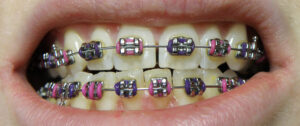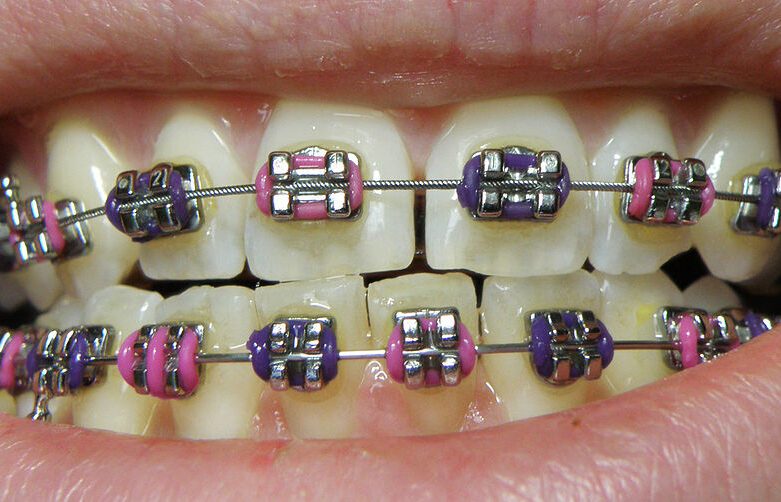Many people seek braces for their appearance, but braces can also offer several long-term medical benefits. Read on to learn more about how they work, from the components that make them up to how they benefit your oral health and digestion. For more information, you can visit Las Vegas Braces to proceed.
Crowded or crooked teeth can be difficult to clean, leading to plaque and tartar buildup. Braces help correct these issues by allowing more space between teeth and correctly aligning the upper and lower jaws.

You’ve probably heard the term “brackets ” if you’re getting braces.” These small squares go on each tooth and act as handles for the arch wires that help guide the teeth into their proper positions. There are many different types of brackets, including stainless steel and tooth-colored ceramic or plastic. Some of them are even clear, so they’re less visible from the front of your smile.
Despite being bonded securely to your teeth with a strong dental adhesive, sometimes brackets can come loose or break. There are a few reasons this can happen. Most commonly, hard or sticky foods can put too much pressure on a bracket and cause it to detach from the tooth. Some people also tend to bite on objects that aren’t food, such as the end of a pen or pencil or their fingernails (see ten germ-tastic reasons to quit biting your nails). These habits can also create excessive pressure on the teeth and cause a bracket to become loose.
A broken bracket can be a pain, but fixing it professionally as soon as possible is important so you don’t delay your treatment and get the desired results. The orthodontist will examine the broken bracket and determine if it needs to be replaced or if the breakage is serious enough to warrant further work.
Another reason to visit the orthodontist as soon as you notice a broken bracket is that it may be poking into your cheek or gums, which can lead to irritation and pain. You can try to bend the wire back toward your teeth using a cotton swab or the eraser end of a pencil (be very careful). If the bracket is loose, save it and bring it to your orthodontist appointment so it can be repaired or replaced.
Brackets are also a type of punctuation mark used in some languages. Curly brackets, which look a little like parentheses, enclose groups of statements and create a local scope in some programming languages. Angled brackets, reminiscent of chevrons, are often used to mark edited text in scientific journals and books.
The metal brackets and wires connecting your braces exert gentle pressure to move crooked teeth into a straight position. The network needs to be springy enough to apply just the right amount of force; too little and your teeth wouldn’t move at all, and too much and the changes would happen too fast, increasing the length of treatment.
Arch wires are made of elastic materials such as nickel-titanium to control the pressure applied to your teeth. These wires are designed to return to their original shape after being deformed, which helps them exert a constant, gradual force on crooked teeth. They are often used in the beginning stages of treatment to put a light initial pressure on your teeth.
Different types of wires depend on what needs to be done to your teeth. Solid wires have a single conductive strand and are more durable than stranded or twisted wires. Coil springs fit over a stranded or twisted wire and help open spaces between teeth or close spaces between teeth. Power chains are small elastic or wire rings that link to a stranded or twisted archwire and help generate more force to move teeth.
The wires can also be shaped to facilitate certain types of movement. An orthodontist will bend the archwire to guide your teeth to their correct positions. This is known as “wire sequencing” and is an important part of your treatment.
While wires are designed to withstand a certain amount of flexing, it’s not uncommon for a broken piece of wire to poke your gums, cheek, or tongue. This is annoying and may lead to infection if it still needs to be fixed as soon as possible.
If a wire pokes into your mouth, use the orthodontic wax that your orthodontist provided to cover the sharp end of the wire and prevent it from irritating you until you can get into the office. You can purchase orthodontic wax at most pharmacies. When using it, remove any food particles and wash your hands thoroughly before applying the wax.
Ligatures are elastics affixed to the brackets themselves, making your braces do all the work of straightening your teeth. They’re also what helps you close those spaces between your teeth or fix that bad bite that doesn’t line up. They can be colored or transparent; you’ll probably change them 4 to 5 times daily. Your Portland orthodontist will show you how to attach them to the hook on the side of each bracket.
This study showed that the 0.010-inch steel ligature ST10 has the highest stiffness and stability to seat the wire in the base of the slot. This is particularly true for Tip-Bar ™ brackets. In addition, it was shown that this ligature type significantly improves the ligation force to change the tip of anterior teeth. This result supports previous reports that using steel ligatures with the Tip-Nar(tm) bracket design increases lingual wire positioning accuracy [1, 2].
The other type of ligature is self-ligating. This is an advanced type of orthodontic bracket that uses a specialized door on the bracket to hold the archwire in place. This reduces friction and plaque buildup and requires less adjusting than other braces.
If you’re looking for more advanced options, you can get a digital or e-bracket. These are smaller and more discreet but provide the same pressure as regular metal braces. They’re also more comfortable, especially if you have an active lifestyle.
Ligatures are a great way to add beauty and character to your text. They can also help you read more easily by connecting characters that wouldn’t normally fit together. For example, the letter sequence fi would look messy without ligatures, with the end of the hook[1] on the lowercase f encroaching or even colliding with the speck over the lowercase i. This could need to be clarified for a reader and detract from the overall look of the text. However, you can accidentally create some pretty ugly ligatures if you’re not careful. To avoid this, learn to use ligatures correctly in your fonts.
Retainers are worn after a person gets their braces off to prevent the teeth from shifting back to their original position. This happens because the periodontal ligament and membranes that support the teeth are now readjusting to the new positions. They may try to pull them back to their old locations without a retainer. Wearing a retainer makes this process much faster and less likely to happen.
Retainers come in various styles, some being removable and others permanently bonded to the inside of the mouth. Orthodontists choose the type of retainer they think will work best for a patient based on their treatment and teeth and jaw structure—some common removable retainers.
These retainers have a flexible plastic or acrylic surface that snuggles against the teeth and holds them in place using bendable wires. A big advantage of removable retainers is that they can be removed before eating, which makes them much easier to clean than permanent ones. Food and plaque can easily get stuck in the small crevices on the bottom of the retainer.
One downside of removable retainers is that they can be misplaced easily, so a patient needs to remember to wear them according to their orthodontist’s instructions. To help them avoid this, patients can buy a retainer case they can put in when it is not in use to prevent them from accidentally throwing them away or leaving them at home.
A more permanent option is a bonded wire retainer, which an orthodontist uses when they think a patient’s teeth are likely to relapse (especially young children). This type of retainer has a metal band around the lower front teeth and a thin piece of plastic glued. It is more expensive than a removable retainer. Because of this, it tends to be used only when the orthodontist believes a patient is likely to remember to wear their retainer (like after their treatment).
It is important for people who have had braces to wear their retainers consistently. If they don’t, their teeth could shift back to their original position, making it much harder to fix the problem later on.
